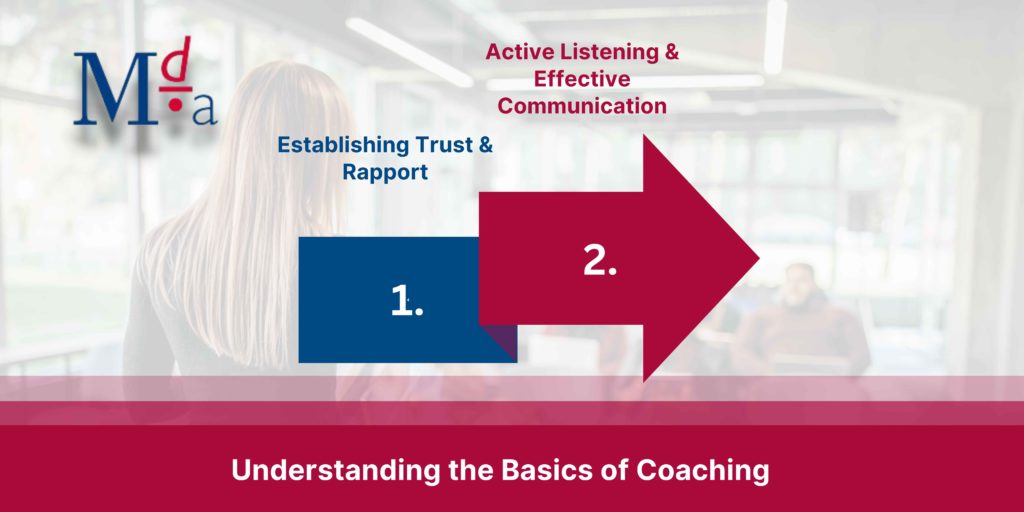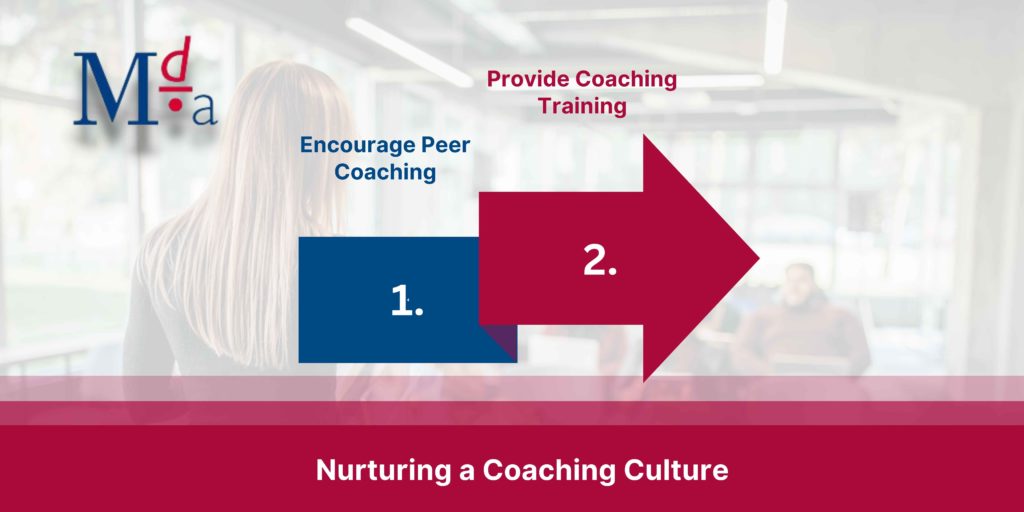How to Optimise Team Coaching your team is an essential skill for any effective leader. It involves guiding and empowering team members to reach their full potential, achieve their goals, and contribute effectively to the organisation. In this blog, we’ll explore the fundamentals of coaching, share real case examples, and provide valuable insights to help you become a successful coach for your team.
Understanding the Basics of Coaching
Coaching is a collaborative and developmental process that aims to improve performance, skills, and knowledge. As a coach, your role is to facilitate growth and provide guidance to team members in a supportive and encouraging manner. Here are some key aspects to understand:
1. Establishing Trust and Rapport
Establishing trust and rapport is a fundamental aspect of effective coaching. Trust is the cornerstone of any successful relationship, and in a coaching dynamic, it forms the basis for open communication, vulnerability, and collaboration. Here’s a deeper look at how to establish trust and rapport in a coaching relationship:
Demonstrating Authenticity and Transparency
Authenticity is key to building trust. Be genuine, open, and honest in your interactions with your team members. Admit your mistakes, share your experiences, and show vulnerability when appropriate. Transparency in your actions and decisions reinforces the trust your team has in your leadership.
Case Example: Alex, a team leader, openly acknowledged a mistake he made in a project. He discussed the issue with the team, took responsibility, and shared the steps he planned to take to rectify the situation. This transparency built trust and respect among his team.
Consistency and Reliability
Consistency in your actions and behaviour is vital in building trust. Ensure that you follow through on promises, meet deadlines, and remain reliable in your commitments. This consistency reinforces your credibility and reliability as a leader.
Case Example: Sarah, a team lead, consistently delivered on her commitments to her team. Whether it was meeting deadlines, providing feedback, or supporting her team during busy periods, her reliability established trust and a sense of security among her team members.
Respecting Confidentiality and Privacy
Respect team members’ privacy and honour confidentiality. Avoid sharing personal information or issues discussed in private coaching sessions with others unless expressly permitted by the individual or when it’s necessary for the betterment of the team or organisation.
Case Example: James, a supervisor, assured his team that anything discussed in their one-on-one coaching sessions would remain confidential, creating a safe space for team members to openly share their concerns and seek guidance without fear of information being disclosed to others.
Building Personal Connections
Invest time in building personal relationships with your team members. Understand their values, interests, and aspirations. Show genuine care for their well-being, both personally and professionally.
Case Example: Emily, a team lead, took the time to celebrate team members’ birthdays, work anniversaries, and achievements, demonstrating a genuine interest in their lives outside of work. This personal connection strengthened the trust and rapport within the team.
Establishing trust and rapport in a coaching relationship lays the foundation for a collaborative and productive environment. It fosters a sense of loyalty, enhances communication, and enables constructive feedback—essential elements for achieving collective and individual success within a team.
2. Active Listening and Effective Communication
Active listening and effective communication are pivotal skills for successful coaching. They form the basis of understanding team members, fostering strong relationships, and facilitating growth and development. Here’s a closer look at how to master these skills:
Active Listening
Active listening is a technique that requires full attention, understanding, and empathy towards the speaker. It involves more than just hearing words—it involves interpreting, evaluating, and responding appropriately to what is being said.
- Give Undivided Attention: When a team member is speaking, focus entirely on what they are saying. Minimise distractions and avoid interrupting.
- Use Non-Verbal Cues: Demonstrate your attentiveness through non-verbal cues like nodding, maintaining eye contact, and using facial expressions that convey understanding and engagement.
- Paraphrase and Summarise: Repeat what the speaker has said in your own words to confirm understanding. Summarise their main points to ensure clarity.
- Ask Clarifying Questions: Seek clarification on any points that are unclear or ambiguous. This shows your genuine interest in understanding their perspective.
- Avoid Assumptions: Refrain from making assumptions or judgments before the speaker has fully expressed their thoughts.
Case Example: During a team meeting, when discussing a project issue, David, the team leader, listened attentively to Sarah’s concerns. He paraphrased her points to ensure he understood correctly and asked clarifying questions to gather all the necessary information before addressing the issue.
Effective Communication
Effective communication involves conveying your message clearly and in a manner that is easily understood by the recipient. It is a two-way process that ensures information is accurately transmitted and received.
- Be Clear and Concise: Express your thoughts in a clear and straightforward manner, avoiding unnecessary jargon or complexity.
- Use Active Voice: Prefer using active voice to clearly state the subject, action, and object in a sentence.
- Encourage Open Dialogue: Create an environment where team members feel comfortable expressing their thoughts and opinions openly.
- Be Mindful of Tone and Body Language: Ensure that your tone is appropriate and respectful, and your body language aligns with your message.
- Listen Before Responding: Allow the speaker to finish before responding, and ensure that your response is relevant and thoughtful.
Case Example: During a team strategy session, Sarah effectively communicated the goals of the upcoming project. She used clear, simple language, encouraged her team to ask questions, and provided ample time for discussion, ensuring everyone understood the objectives and their respective roles.
By mastering active listening and effective communication, you enhance your ability to connect with team members, understand their needs, and convey your expectations and feedback clearly. These skills form the basis of a strong coaching relationship and contribute to a harmonious and productive team dynamic.
Key Coaching Skills and Techniques
1. Asking Powerful Questions
Asking powerful questions is an essential skill in coaching that allows the coach to guide the individual’s thinking, promote self-reflection, and stimulate creative problem-solving. These questions encourage individuals to explore their thoughts, feelings, and perspectives more deeply. Here’s a closer look at how to ask powerful questions:
Framing Thought-Provoking Questions
- Open-Ended Questions: Pose questions that require more than a simple “yes” or “no” response. These questions encourage the individual to provide detailed answers, promoting a deeper discussion.
Example: “Can you describe the situation in more detail?”
- Clarifying Questions: Seek additional information or clarification to ensure a thorough understanding of the individual’s perspective.
Example: “Could you elaborate on what you mean by ‘challenging work environment’?”
- Reflective Questions: Encourage self-reflection and introspection by asking individuals to consider their thoughts, feelings, or actions.
Example: “How do you think this decision aligns with your long-term goals?”
- Hypothetical Questions: Encourage individuals to think beyond their current situation by posing hypothetical scenarios.
Example: “If time and resources were not a concern, how would you approach this project differently?”
Encouraging Exploration and Self-Discovery
- Probing Questions: Delve deeper into a particular topic to encourage individuals to think critically about various aspects.
Example: “What factors do you think contributed to the success of your recent project?”
- Challenging Assumptions: Encourage individuals to question their assumptions and beliefs, fostering a fresh perspective.
Example: “What if the current approach you’re considering is not an option? What alternatives might you explore?”
- Goal-Oriented Questions: Help individuals identify their goals and aspirations, guiding them toward a clearer vision of the future.
Example: “What steps can you take to align your actions with your career goals?”
Fostering Creativity and Innovation
- Brainstorming Questions: Encourage individuals to generate ideas and solutions without judgement or evaluation.
Example: “What are all the possible ways we could approach this problem?”
- Boundary-Pushing Questions: Challenge individuals to think beyond conventional boundaries or constraints.
Example: “If you had unlimited resources and support, how might you approach this differently?”
Asking powerful questions is about guiding the coaching conversation in a way that facilitates deeper thinking, self-awareness, and potential solutions. These questions can lead to valuable insights and revelations, empowering individuals to make informed decisions and take meaningful actions.
Case Example: Sarah, a coach, used powerful questions to guide her team member, Mark, through a challenging project. By asking open-ended questions and encouraging Mark to reflect on previous experiences, she helped him uncover new strategies and approaches that significantly improved the project’s outcome
2. Providing Constructive Feedback
Providing constructive feedback is an art that involves offering insightful observations, specific examples, and actionable suggestions to help an individual grow and improve. Constructive feedback focuses on behaviours or actions rather than the person themselves. Here’s a closer look at how to provide effective constructive feedback:
Delivering Specific and Actionable Feedback
- Be Specific: Pinpoint the particular behaviour or action you are addressing, providing clear and precise details.
Example: Instead of saying, “Your presentation needs improvement,” say, “Your presentation lacked engaging visuals and could benefit from a more structured flow of information.”
- Offer Examples: Support your feedback with concrete examples to help the individual understand the context and nature of the observed behaviour.
Example: “During the team meeting yesterday, when presenting your ideas, you frequently glanced at your notes and hesitated, which affected the overall flow of your presentation.”
- Link to Impact: Explain the consequences or impact of the behaviour, helping the individual understand the significance of the feedback.
Example: “Your hesitations and lack of eye contact made it challenging for the team to fully grasp your ideas, potentially hindering effective decision-making.”
Balancing Positive and Constructive Feedback
- Start with Positives: Begin by acknowledging and highlighting what the individual has done well to create a positive and receptive environment.
Example: “You demonstrated excellent creativity and enthusiasm in presenting your ideas during the meeting.”
- Identify Areas for Improvement: Present the areas where improvement is needed, ensuring your feedback is constructive and focused on growth.
Example: “To further enhance your presentations, consider working on maintaining eye contact and incorporating more visual aids for better engagement.”
- End on a Positive Note: Reinforce the individual’s capabilities and potential by summarising the positive aspects and expressing confidence in their ability to improve.
Example: “I believe with some adjustments, your presentations will become even more impactful, showcasing your exceptional skills.”
Using the Situation-Behavior-Impact (SBI) Model
- Describe the Situation: Provide context by explaining the specific situation or circumstance in which the observed behaviour occurred.
- Explain the Behaviour: Describe the actual behaviour or action you observed without making judgments or assumptions.
- Discuss the Impact: Detail the impact or outcome resulting from the behaviour, focusing on how it affected others or the situation.
Example: “During the team meeting (situation), when presenting your ideas (behaviour), your hesitations and lack of eye contact made it challenging for the team to fully grasp your ideas, potentially hindering effective decision-making (impact).”
Encouraging Growth and Development
- Offer Solutions and Suggestions: Provide guidance or suggestions on how the individual can improve and grow based on the feedback provided.
Example: “Consider practising your presentation in front of a mirror or a trusted colleague to build confidence and work on maintaining eye contact.”
- Encourage a Growth Mindset: Emphasise that feedback is meant to support growth and development, and encourage the individual to view it as an opportunity to enhance their skills.
Example: “Feedback is an essential tool for growth; let’s work together to help you achieve your full potential.”
Constructive feedback is an invaluable tool for personal and professional development when delivered effectively. It provides individuals with the guidance and insights needed to make positive changes and reach their goals. Remember, constructive feedback is a gift that, when given with empathy and care, can lead to significant improvements and a more empowered individual.
Nurturing a Coaching Culture
Creating a culture of coaching within your organisation can lead to increased employee engagement, improved performance, and a stronger sense of collaboration. Here’s how you can achieve this:
1. Encourage Peer Coaching
Promote peer coaching within your team, where team members can learn from each other’s experiences and provide valuable insights and suggestions.
Case Example: A marketing team implemented a peer coaching program, allowing team members to pair up and provide feedback on each other’s projects. This initiative not only improved the quality of work but also fostered a collaborative atmosphere within the team.
2. Provide Coaching Training
Providing coaching training to managers and team leads is an essential step in fostering a coaching culture within an organisation. It equips them with the skills and knowledge needed to support and develop their team members effectively. Here’s a comprehensive guide on how to provide coaching training:
Identifying Training Needs
- Conduct a Needs Assessment: Assess the current coaching skills and competencies of managers and team leads to identify specific areas for improvement and development.
- Collect Feedback: Gather feedback from team members regarding their experiences with coaching and the areas in which they feel their leaders could improve.
- Define Objectives: Establish clear training objectives based on the identified needs, ensuring they align with the organisation’s overall goals and values.
Designing the Training Program
- Curriculum Development: Create a comprehensive curriculum that covers fundamental coaching principles, effective communication, active listening, asking powerful questions, providing constructive feedback, and fostering a coaching mindset.
- Interactive Workshops and Role-Playing: Design interactive workshops and role-playing activities to allow participants to practise coaching techniques in a safe and supportive environment.
- Incorporate Real Case Examples: Integrate real-life case examples and scenarios to make the training relatable and provide practical insights into coaching challenges and solutions.
- Leverage Technology: Utilise digital platforms for online training modules, webinars, or virtual classrooms to make the training accessible and flexible.
Selecting Trainers
- Internal Experts: Utilise internal coaching experts, if available, to conduct the training. They have a deep understanding of the organisation’s culture and can tailor the training to its specific needs.
- External Facilitators: Consider hiring external coaches or facilitators with expertise in coaching and training to bring fresh perspectives and insights to the training program.
Implementing the Training
- Schedule and Logistics: Plan the training sessions and organise logistics such as venue, materials, and equipment to ensure a smooth training experience.
- Interactive Sessions: Conduct interactive training sessions that encourage active participation, discussions, and sharing of experiences.
- Role-Playing Exercises: Include role-playing exercises where participants can practise coaching techniques and receive constructive feedback from their peers and trainers.
Evaluating Training Effectiveness
- Feedback and Surveys: Collect feedback from participants immediately after the training to gauge their satisfaction, understand what worked well, and identify areas for improvement.
- Post-Training Assessments: Conduct follow-up assessments to evaluate how well participants have applied the coaching skills they learned during the training.
- Continuous Improvement: Use feedback and evaluation results to make necessary adjustments to the training program for future sessions, ensuring continuous improvement.
Reinforcing Learning
- Ongoing Support and Guidance: Offer ongoing support and guidance to participants as they apply coaching skills in their day-to-day interactions with team members.
- Regular Check-Ins: Conduct regular check-ins or follow-up sessions to address any challenges, answer questions, and reinforce the coaching principles.
- Recognition and Rewards: Acknowledge and reward managers and team leads who demonstrate exceptional coaching skills and contribute positively to the coaching culture.
Providing coaching training is a strategic investment that can significantly enhance leadership effectiveness, team performance, and overall organisational success. It empowers leaders to build strong relationships with their teams, foster a culture of continuous growth, and drive superior results.
Simulation-Based Training
- Design Realistic Scenarios: Create simulated coaching scenarios that mimic real-world situations managers and team leads might encounter. These should cover various aspects of coaching, from giving feedback to conflict resolution.
- Interactive Platforms: Utilise interactive platforms or virtual environments where participants can engage in the simulation, make decisions, and observe the consequences of their actions in a risk-free setting.
- Provide Immediate Feedback: Incorporate mechanisms for providing immediate feedback during or after the simulation, highlighting strengths and areas for improvement based on participants’ actions and decisions.
- Debriefing Sessions: Conduct debriefing sessions after each simulation to discuss participants’ experiences, share insights, and provide additional guidance on effective coaching strategies.
Gamification
- Introduce a Point System: Assign points or badges to participants for completing training modules, participating in discussions, or successfully completing coaching challenges. Accumulated points can lead to rewards or recognition.
- Coaching Quests and Missions: Frame training as a series of quests or missions, each focusing on specific coaching skills or scenarios. Participants earn points or progress to the next level upon successful completion.
- Leaderboards: Create a leaderboard showcasing participants’ progress, rankings, or achievements. This fosters a sense of competition and motivates individuals to actively engage and excel in the training.
- Incorporate Interactive Quizzes and Challenges: Include quizzes, puzzles, or challenges related to coaching principles and skills. Offer rewards for correct answers or successful completion to keep participants engaged.
Implementation
- Workshop with Simulated Scenarios: Integrate simulation-based exercises within workshops. Participants can navigate through various coaching scenarios in a virtual environment, receiving instant feedback on their coaching approaches.
- Interactive Online Modules: Utilise online modules with gamified elements such as quizzes, interactive videos, and branching scenarios. These modules can be accessible on a learning platform, providing a flexible and engaging learning experience.
- Team-Based Challenges: Organise team-based coaching challenges where groups compete by applying coaching techniques to solve specific organisational challenges. The team with the most effective coaching approach wins.
- Role-Playing Games (RPGs): Develop coaching-themed RPGs where participants can create avatars, navigate coaching scenarios, make choices, and progress through levels by showcasing effective coaching behaviours.
By incorporating simulation-based training and gamification, the coaching training program becomes immersive, interactive, and enjoyable. Participants are more likely to retain knowledge and apply learned skills effectively in their coaching practices. Additionally, it adds an element of fun and excitement, driving increased engagement and motivation throughout the training journey.
What’s Next?
Coaching your team is a transformative journey that requires dedication, empathy, and continuous learning. By establishing trust, honing essential coaching skills, and fostering a coaching culture, you can guide your team towards success and fulfilment. Remember, effective coaching is not just about telling your team what to do—it’s about empowering them to discover their potential and achieve greatness. Start coaching, start transforming, and watch your team thrive.
If you’re looking to enhance your coaching skills and make a positive impact, MDA Training is here to support you. Our seasoned trainers are dedicated to empowering leaders like you with the expertise and tools needed for effective coaching. Let MDA Trainers empower your team through comprehensive simulation-based coaching.














